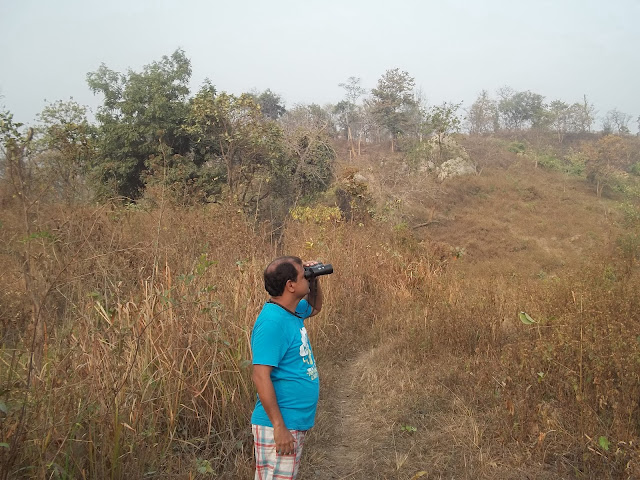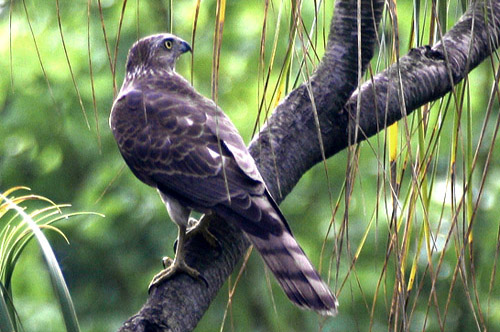Bird watching is often seen as a hobby for nerds with beards, wearing goat woollen socks in their slippers. But during our travels last years, we experienced that many of these stereotypes are outdated. Off course, bird watching is still mainly a male thing, but once in a while we also meet female bird watchers, or couples. The percentage of beardy people isn’t higher than elsewhere in society and we didn’t see bird watchers with goat woollen socks in slippers yet. But what is true, is the fact that most bird watchers have an interest in nature and that they like to spend time in green and quiet environments. The accent lies on tracing and observing birds, but most bird watchers also have a healthy interest in other nature things like butterflies, insects, flora, etc.
The so-called ‘twitchers’ and ‘listers’ are a subcategory of bird watchers; people who like to extend their bird list as much as possible. These people sometimes have an agreement with their employer that they can leave their work in case a rare or special bird is detected on the other side of their country. If you want to see as much birds as possible during your holiday, you can consider booking a bird watching holiday at a company like Bird Tours Asia or Bird Quest, both specialised in birding trips. But these holidays don’t come cheap. Expect to pay around € 5000 per person for a 16-18 day trip to Asia! That is not the kind of bird watching we like, because you can do exactly the same kind of trip all by yourself for a lot less money. And that is much more fun because you track and trace the birds all by yourself, without some kind of guide pointing out the birds to you. Off course, you probably won’t see the number of birds as the birding agencies do. So, not really an option for us, but a great solution for people who do not want or dare to travel individually.
We are at the moment on Fraser’s Hill, one of the three main bird watching areas on the Malayan Peninsular. Kuala Selangor is often visited for the mangrove birds, Taman Negara for the lowlands rainforest birds and Fraser’s Hill for the highland birds. This former colonial hill station is blessed with more than 200 resident bird species and around 60 migratory species. Before we visit a popular birding area, we often try to find trip reports on the internet to get an idea about the kinds of birds that can be found in the area. Some trip reports also provide trail details and sometimes even maps. In a trip report of one of the major bird watching agencies, we read that they saw on Fraser’s Hill almost a hundred different species in only four days. For a moment we were a little bit jealous, but when we realised that these people do everything to see the bird, like using audio tapes with bird sounds to entice them, the jealousy slipped away. That’s not the type of bird watching we practice. We just want to walk the trails and see what we see. If we don’t see some specific species, than it’s at most a pity but absolutely no disaster.
As soon as we arrived in picturesque Fraser’s Hill, some of the more common seen species showed themselves very well in the centre of the village. But, when we went for an afternoon walk in the jungle, it was almost grisly quiet. We realised soon that we really have to ‘work’ hard in Fraser’s Hill to see the more special and shy species. And that means moving slowly and concentrated through the jungle, searching for little movements in the often thick bushes and trees. The spectacular Fire-tufted Barbet is described in many trip reports as a common bird in Fraser’s Hill, but after a long day of bird watching, we unfortunately didn’t see it. But the environment is beautiful, so even without seeing a lot of birds, we still have a great time. The following days, things changed. We were getting more used to bird watching in Fraser’s Hill, and slowly birds showed themselves. After four days of bird watching, we saw fifty-five different species, including different species of Barbet, Broadbills, the beautiful Red-bearded Bee-eater and even the elusive Malayan Whistling Thrush and Lesser Shortwing.
Fraser’s Hill is a great environment if you like nature and hiking. The area has some great trails and even walking over the paved roads, which are very quiet, especially outside the weekend, is very nice. You will regularly see wildlife; not only colourful birds, but also a lot of monkeys like different sorts of Leave Monkeys and even Siamangs. Besides that, the jungle contains a lot of insects, squirrels and reptiles like the flying lizards. So, we have a great time in Fraser’s Hill. Everyday we see more and more different bird species. Like we said, it is not very easy, but it is absolutely enjoyable.

































































